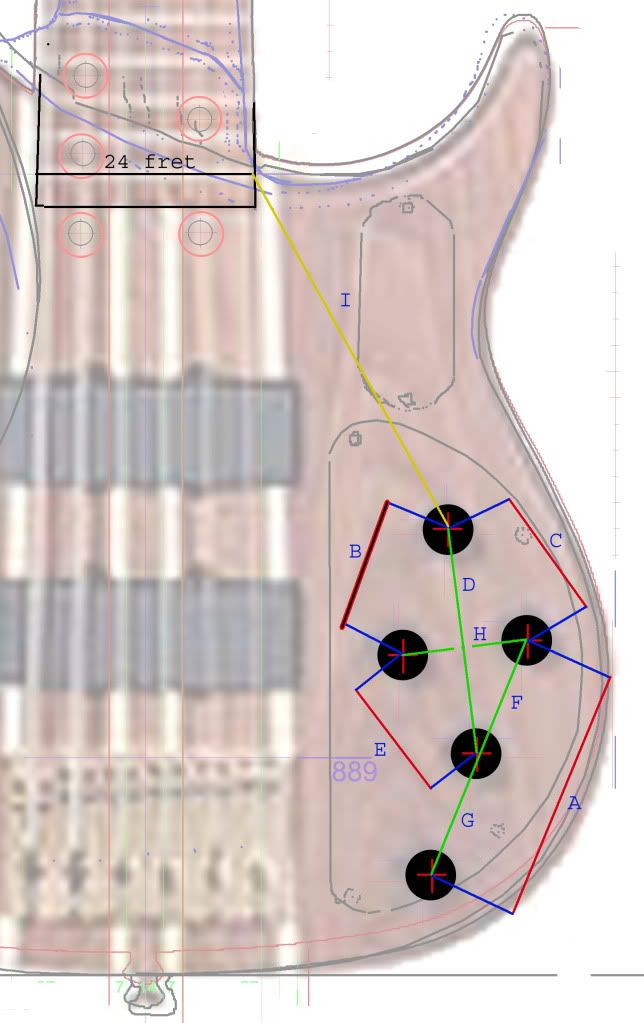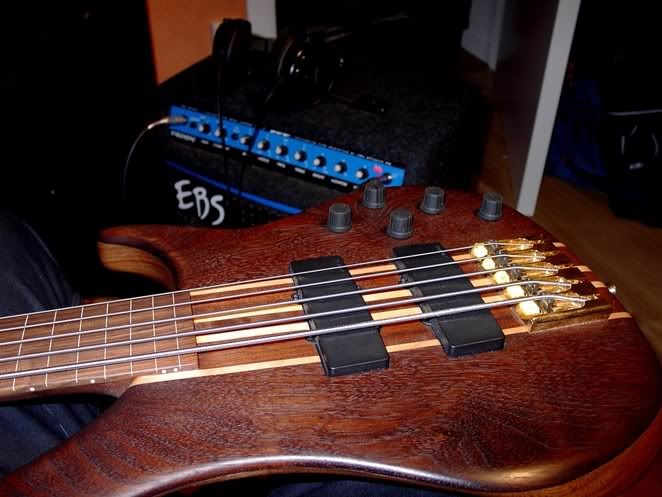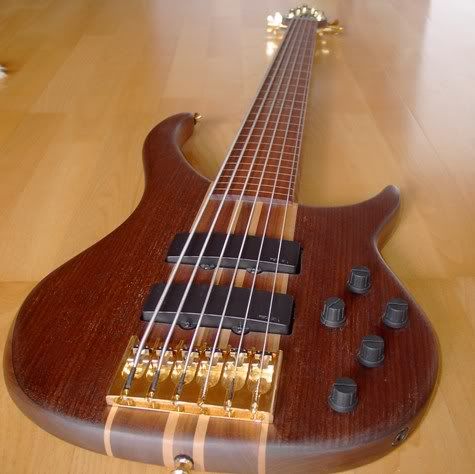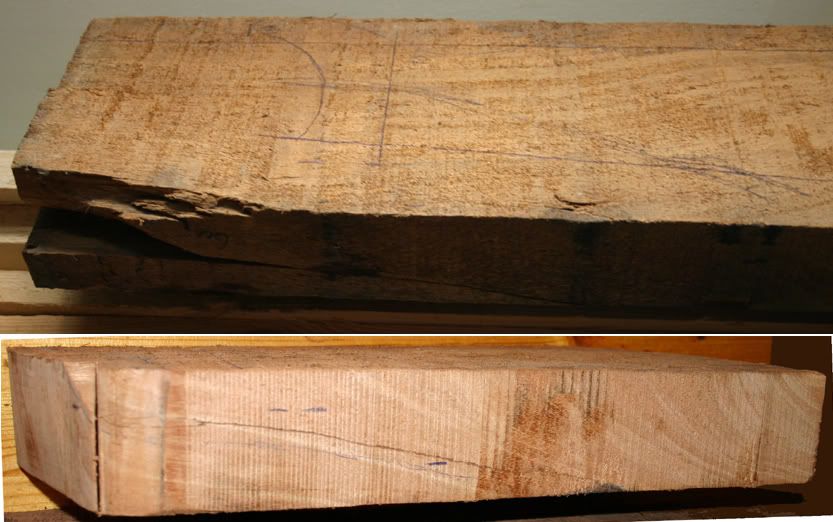
Metallion
-
Posts
130 -
Joined
-
Last visited
Content Type
Profiles
News and Information
Tutorials
Product Reviews
Supplier Listings
Articles
Guitar Of The Month
Links and Resources
Forums
Gallery
Downloads
Posts posted by Metallion
-
-
Looking for Schematics for a Kustom Lead III guitar Amplifier top
The out signal to the Speaker doesn't work.
Line seems ok.
The repair shop cant find any schematics from the maker, and they cant do anything more until they have schematics.
Voltage varies from 0.5 to 20 V without explanation.
Have looked on the net but found no Kustom schematics specifically for the III Lead top.
Anyone got them as PDF or knows where to find them? -
-
Where can you see his work?
-
Have any of you got a U100 fretboard (Ebony, 10" r?) made by a custom fretboard maker /inlay artist?
Or experience of a competent custom FB/inlay maker that could do complex inlays good.
Looking for someone pro that can make a FB with the elliptic pearloid inlays proper as of the U100.http://medias.audiofanzine.com/images/normal/aria-guitars-u100-585830.jpg
-
What it s the body edge curvature radius on a Peavey Cirrus Bass?
Also looking for the head angle of the Cirrus.
If anyone has a Cirrus - Also looking for the knob placement on a 6-string...
A: C-C low-eq to hi-eq
B: C-C vol to mix
C: C-C vol to low-eq
D: C-C vol to mid-eq
E: C-C mix to mid-eq
F: C-C lo-eq to mid-eq
G: C-C mid-eq to hi-eq
H: C-C low-eq to mix
I: C-Vol to edge of 24th fret

...and back cavities dimensions:
http://www.talkbass.com/forum/attachment.php?attachmentid=231770&d=1318531451
-
sounds like a different issue and should probably be a different topic to save confusion.
sounds like metallions frets are popping out of the board rather than protruding at the ends
again it can be a humidity issue, but its a bit more tricky to fix - if they wont stay in place you will need to use some thing to help them. i find a little drop of superglue ran under the fret (and hopefully into the slot) with a little while in the clamps is usually enough
although if it was bad enough i decided it needed a full refret i would use a little woodglue or epoxy in the slots to ensure they stayed there. depends how bad it was. wood glue doesnt stick to the metal, but it can be useful for slightly swelling the wood and hardening it around the tang.. epoxy comes out if the slots are truly shot.
New Topic: http://projectguitar.ibforums.com/index.php?showtopic=45576
It's Very Old so humidity won't affect it either way on this issue.
Maybe I'll try the superglue.
-
I have some frets on a old Brand-name Classic neck that is protruding, bending up perpendicular to the fretboard surface, on the sides of the FB - flat in middle.
You can press the fret-ends down by hand, about 0.5-1 mm, but as soon as you let go they rise again.
The guitar is really Old, so humidity has no short time passing affect on this, either way.
More like Metal fatigue, plastically getting back to it's original shape.
I was thinking of applying some wood glue at the sides while pressing down for setting, but then you have to make sure that the (new) Fretboard-flat position of the fret won't be out of line and causing fretbuzz and whatever.
Maybe superglue, as suggested.
Has Anyone done it?
-
I have some frets on a Classic neck that is protruding, bending up, on the sides of the FB - flat in middle.
You can press the fret-ends down by hand but as soon as you let go they rise again.
I was thinking of applying some wood glue at the sides while pressing down for setting, but then you have to make sure that the (new) Fretboard-flat position of the fret won't be out of line and causing fretbuzz and whatever.
Has Anyone done it?
-
Looking for a r 2.5mm Profiling Router Bit for making the radius on the JEM body edges.
http://static.keebali.com/jemsite.com/jem/origin/jem777_blueprint.jpg
Where can you get them?
-
Anyone know from what show this was recorded?
Yngwie Malmsteen Plays Flight of the Bumblebee
http://www.youtube.com/watch?v=70APtQuc31E
Seems noone knows on Youtube.
Is the whole concert recording available somewhere?
(right forum?)
-
Get som Flat Fret press pieces [stewmac] and press where obvious.
Place it over 3-4 frets and where rocking, press.
More accurate work than that needs sufficient equipment...
Or do you mean on the SIDE of the FB?
-
Looks plenty stiff already with those laminations, but it depends on how slender the profile is and how effective the rod is in counteracting string tension. I can't imagine reinforcement being extensive or even necessary.
Ask a local veterinary surgery to get an x-ray (I'm not sure if there are any professional implications for qualified x-ray operators in doing this) or rip that fingerboard off and have an eyeball.
Realistically, I think just using common building techniques and decision making will result in a fine instrument and I doubt differences in reinforcement or rod length would be noticable.
Building from pictures, ain't got no access to a Cirrus.
-
There is no answer to that question.
The stiffness woods you use for the neck (QS rock Maple vs. flatsawn Mahogany for example) and the back profile define the majority of the neck's properties. A combination of stability and adjustability is the ideal target. A neck that is too stiff isn't a good thing as you won't be able to adjust it when you need to; a perfectly straight neck is rarely ideal. It's just a balance, that's all.
You'd be far better off building the instrument and learning from your results for future builds or staying relatively close to your benchmark instrument's specifics - the Peavey Cirrus.
I'm getting it as close as possible to the Cirrus.
Peavey won't reveal the extent or measurements of the "Graphite reinforcements".
http://www.peavey.com/products/browse.cfm/...206%20Maple.cfm
It's Walnut - WN/maple/walnut/maple/WN - neck. See Images on any 6-str Cirrus.
5:

6:

-
How much Carbon rods, Graphite rods, should be needed for this neck?
2 Gr rods, 1 on each side of the 2-way TR x what length? and x what av. area, circular, rectangular or square?
-
I am now using ALLPARTS wire... no clue were they get it from but it reminds me of my old Dunlop wire and is plenty hard.
The 6100 available are 18% nickel/silver hard alloy.
Equal to the Allparts?
-
There are some builders who prefers Stewmacs Fretwire to Dunlop's (6100 etc).
They claim it's a harder, more durable fretwire.
But why does Fender and Ibanez have Dunlop as standard fretwire on their originals?
Sound?
A subjective taste and not a "Better" model answer maybe.
-
I would slice it in half and see what that does to the internal tension, although it is likely going to end up firewood.
Steve Vai's EVO guitar had a similar crack in the body.
Anyone knows how that got fixed?




http://www.guitarwa.com/jtsb/dssb/200604/997.html
Heard about "vacuum" glue inserting - no home fix.
-
Where is the optimal position for the end of the Trussrod on a neck-through?
Last fret?
-
Did some theoretical calculation and found 0.64-0.63 to be a plausible angle for the Cirrus body-neck angle.
Anyone to confirm this?
Correction: it should be 1.1 dgr body-neck angle.
-
What is the common String height - fretboard to underside of string - for a fretless bass 35" at the nut?
0.5mm, 1mm?
Any tabelles on this?
-------------
Stewmac: .030" (guitar, fretted)
-
Did some theoretical calculation and found 0.64-0.63 to be a plausible angle for the Cirrus body-neck angle.
Anyone to confirm this?
-
Hard to tell without a pic, but hairline checks in burl walnut is not uncommon. If the wood is dry and seasoned, and being that its going to be laminated to a stable sub surface, I'd say wick in some water thin CA and call it good.
Top img of plank with contour-outline of right piece + expected crack orientation.

Bottom pic of cut piece, crack still visible - chip upper left corner from crack (went through) - "side" surface to be glued to maple.
5cm thick WN piece, so bottom or top is cut 1cm.
-
"Secret information?" Seriously? When anyone can just go to GC and measure it for themselves?
Neat.
Peavey CS: "propriatary information and cannot be disclosed."
Anyone have this angle info?
-
Having some Walnut for a bass body, Cirrus style.
The outermost right walnut bodypart - surface to be glued to maple, se http://www.peavey.com/products/browse.cfm/...06%20Walnut.cfm - have a diagonal crack from top down towards the bottom, going about 2cm in at top and surfacing at the bottom (gluing surface).
The crack is a hairline and doesn't really facilitate any real glue to ooze in.
The issue is sound affecting and any possibility of the crack extending (from use).
I knew it had a crack in the plank but cut it out to see the extent of the damage.
Is such pieces useful or just to throw?

Schematics for kustom Lead Amp top?
in Electronics Chat
Posted
Looks like I got the right plans, for some "pc506..." board.
Now it's about + 0.7 V DC out, for the speaker out port.
He says that value is ok, But it varies, and he can't figure out why.
When he cools the two "Differential steps", (called Q1 and Q2: "2122" or 4249?) one gets to plus + 2-3V, the other to minus - 2-3V.
It's some kind of balancing coupling.
The repairman cant figure out if it should be a difference on the two steps like that.
, if he should keep looking for a fault or stop there, since what should happen in the amp, with it's values etc, is not clear.
If someone knew?
He gets a 25V + DC at times
It's a -71-78 make amplifier module